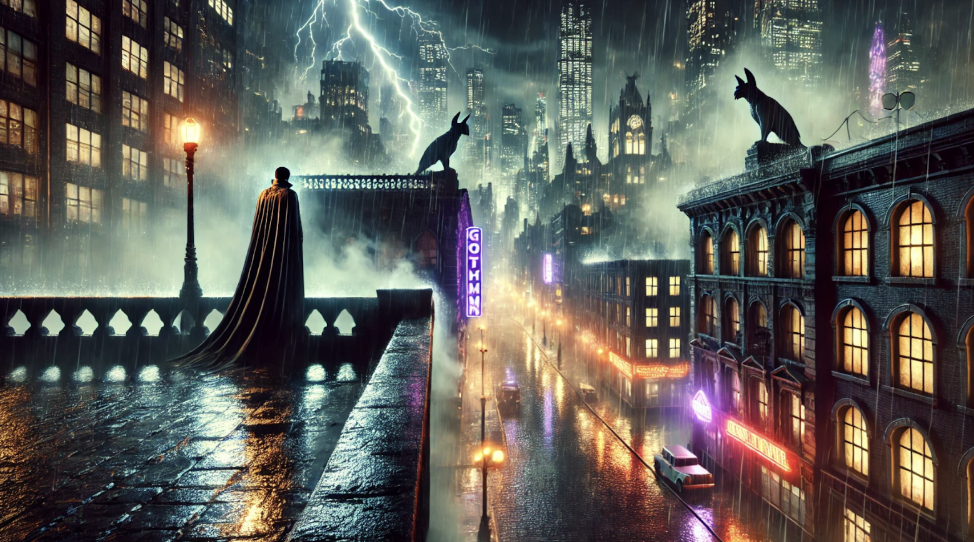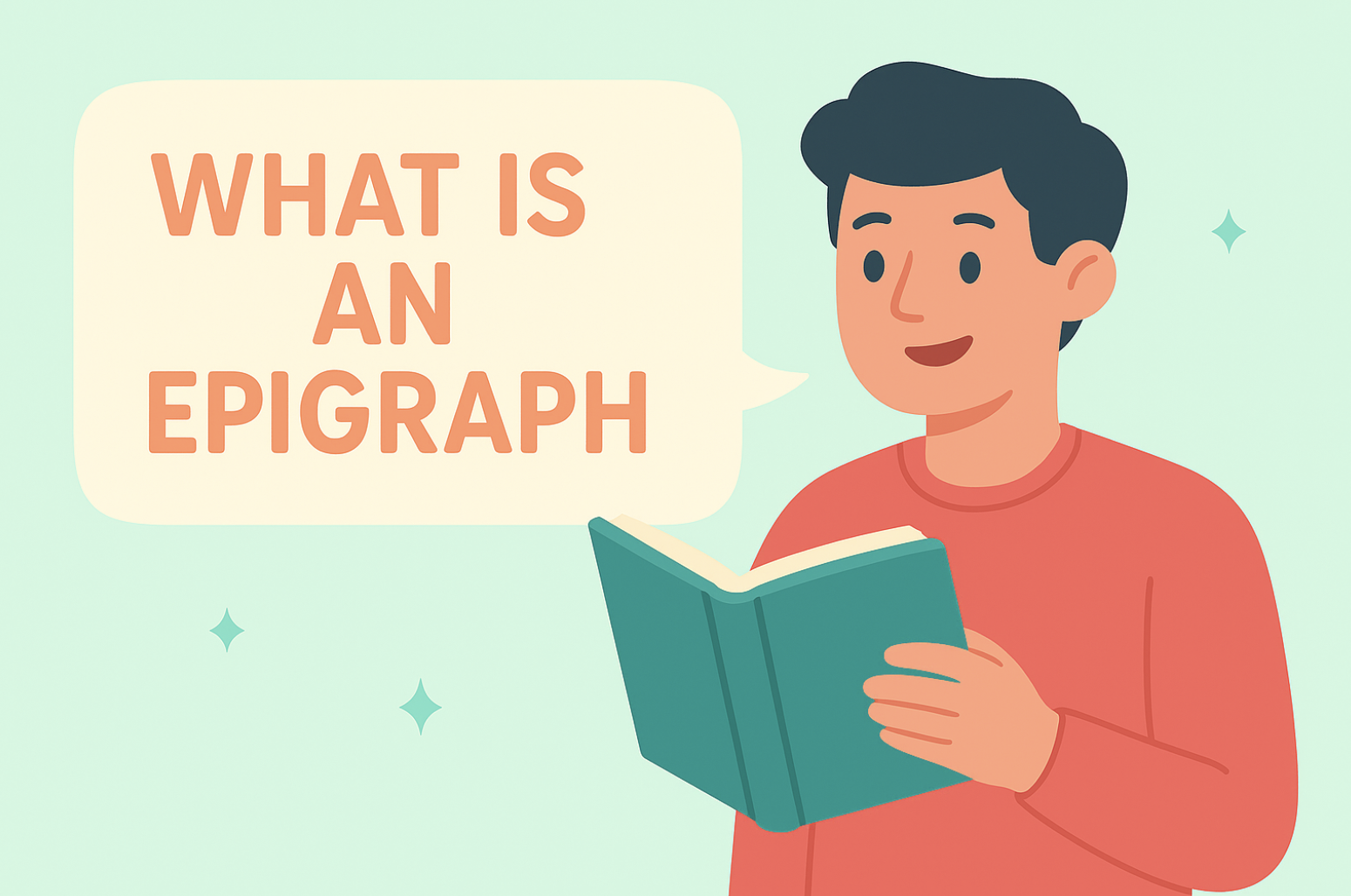Before Harry ever got his wand or Katniss ever drew her bow, their worlds did something crucial: they set the stage. Whether it’s the enchanted halls of Hogwarts or the eerie, ever-watching woods of Panem, the setting of a story does more than describe a place — it creates a mood, sets the atmosphere, and shapes the reader’s experience from the very first page.
Think of a story setting as the GPS coordinates of your narrative — only instead of just telling us where and when, it reveals how characters live, what they value, and even how they speak or think. It’s an important element in both fiction and non-fiction, grounding readers in a specific time, place, and culture. In real life, we’re shaped by our surroundings — and in storytelling, it works the same way. Place a character in a quiet countryside cottage, and you’ll get one kind of tale. Drop them into a burning spaceship orbiting a doomed planet… and suddenly, it’s a very different Tuesday.
So, what is the setting of a story exactly? Or better yet, what is a setting of a story when you break it down? It’s more than a dusty backdrop or a convenient weather report. It’s the foundation of your fictional world — the canvas where your characters, plot, and themes come to life.
Whether you’re crafting fiction, building a non-fiction narrative, or finally tackling that novel you’ve been “just about to start” for six years, mastering your setting is how you bring your story to life — and make it matter.
What Is the Setting of a Story?
So, let’s start with the obvious question: What is the setting of a story?
At its core, the setting refers to the time, place, and environment in which the events of a story unfold. But a truly well-crafted setting goes beyond coordinates and calendars — it gives the story context, color, and a beating heart. It’s the backdrop against which everything happens, but it also shapes the way your characters think, feel, and interact with the world around them.
A story’s setting can be broad — like a futuristic galaxy at war — or incredibly specific — like a single room in a house during a stormy night. It can stretch across an entire city, focus on a small town, or even unfold in one cramped apartment. Wherever your narrative takes place, the story setting helps define the rules, rhythms, and limitations of that world.
And it’s not just for fiction. In non-fiction, the setting still matters. A memoir set in 1980s New York will feel wildly different from one set in a quiet 1950s Midwestern town. The time and place influence the tone, the themes, and the reader’s experience — even when the story is drawn from real life.
A strong setting typically includes:
- Time (year, era, season, time of day)
- Location (geographical place, surroundings, architecture)
- Social environment (societal norms, politics, class structure)
- Weather and atmosphere (gloomy, bright, chaotic, quiet)
Together, these elements help establish the mood of the story and serve as an anchor for the plot and characters. They also invite the reader to step into a fully formed world — one that makes sense, feels alive, and offers depth beyond the dialogue.
In short, the setting of a story isn’t just where things happen — it’s why they happen the way they do. Whether it’s a windswept moor, a post-apocalyptic wasteland, or a cozy kitchen in the suburbs, the setting gives your story its unique form and emotional weight.
Why Setting Is More Than Just a Place
It’s easy to think of the setting as just the physical place where the story unfolds — a house, a city, a stretch of land, maybe a woods if things get spooky. But a truly powerful story setting is much more than that. It’s not just where the action happens — it helps explain why it happens, and how it feels when it does.
The setting of a story plays a key role in shaping your main character’s thoughts, choices, and even their emotional state. A character raised in a war-torn society will approach challenges differently than one raised in a peaceful mountain town. In other words, the setting influences your character’s mental state just as much as it influences the plot.
Setting also helps establish the themes and mood of your narrative. A story that takes place in the middle of a thunderstorm immediately feels tense, even before anything happens. Swap that out for a sunlit picnic in the countryside, and suddenly everything feels lighter — even if your characters are talking about deep, existential crises over sandwiches.
And don’t forget the reader’s experience. A rich, layered setting gives the reader more than just a visual — it gives them a sense of being present in the world. Through the right details, a setting can evoke nostalgia, dread, warmth, or awe.
Whether you’re writing fiction or non-fiction, the setting should serve your story’s deeper purpose. It’s a tool for building emotion, creating contrast, and adding meaning. So when you’re crafting your next scene, ask yourself: What is this place really saying? What kind of life, society, or history does it reflect?
Because a great setting doesn’t just exist — it talks, it conveys, and it connects.
Your Publishing Journey Awaits – Start NowElements of a Well-Crafted Setting
Not all settings are created equal. A well-crafted setting isn’t just a backdrop — it’s a living, breathing part of your story. It shapes the tone, supports the plot, deepens your characters, and makes the reader feel like they’re right there, walking through the world you’ve built.
So, what are the key elements that make a setting truly stand out?
1. Time
The time of your story helps establish context and influences everything from character behavior to dialogue. Is your story set in ancient history, a dystopian future, or modern-day New York? Does it unfold over a single night or span an entire life? The time period also reveals what’s possible — and what’s not — in your narrative.
2. Place
This includes physical location and geographical details: a room, a house, a city, a country, or even another planet. A story set in a cramped apartment will feel very different from one set on a windswept cliff or in a bustling market. Think in terms of space and scale — is your setting intimate or expansive?
3. Environment
This is where atmosphere really comes into play. What’s the weather like? Is it a foggy morning, a rainy night, or a dry, scorching desert? The environment also includes the emotional tone — eerie, cheerful, chaotic, or calm. These details help establish mood and shape how your readers interpret each scene.
4. Social and Cultural Context
A truly immersive setting also includes society, class structure, politics, language, and traditions. Are your characters part of a tight-knit village or navigating life in a fractured, tech-driven metropolis? What do they notice in their world — and what do they take for granted?
5. How Characters Interact With the Setting
Characters don’t just exist in a setting — they engage with it. They walk through rooms, look out of windows, notice sounds, smells, and textures. A strong setting reflects how characters see, hear, and feel their world through the five senses, revealing both their inner lives and the outer world.
A well-crafted setting doesn’t just support your story — it enriches it. The more layered and intentional your setting, the more immersive your writing becomes.
How to Write a Setting of a Story That Pulls Readers In
A setting isn’t just something you describe — it’s something the reader should feel. If your setting feels flat, generic, or forced, the entire scene can lose impact, no matter how strong the dialogue or action might be. But when done well, a vivid setting draws readers in and keeps them there. That’s why learning how to write a setting of a story — and more specifically, how to describe the setting of a story in a way that feels alive — is so important. It’s not just about listing details, but about building a world your characters and readers can fully experience.
Here’s how to create a story setting that’s immersive, memorable, and meaningful:
1. Use the Five Senses
Want to make your setting feel alive? Engage the five senses — sight, sound, smell, touch, and taste. Don’t just tell us the woods were quiet. Let us hear the crunch of dry leaves, smell the moss, feel the sharp chill in the air. These details give the setting texture and depth that readers can connect to instinctively.
2. Filter It Through Your Main Character
Don’t describe the setting like a tour guide. Describe it the way your main character would experience it. What do they notice? What feels familiar, strange, comforting, or threatening? A child walking into a crowded city will notice completely different things than a detective, a soldier, or a lost tourist.
This helps tie the setting to your character’s mental state and gives your world emotional weight.
3. Let the Setting Shape Dialogue and Action
The way people talk, move, and react is often shaped by their surroundings. Think about how people speak in a loud nightclub vs. a quiet hospital corridor. Let your setting subtly shape your dialogue and your characters’ behavior — it’s more powerful than an info dump.
4. Start Small and Build Out
Not every scene needs sweeping worldbuilding. Sometimes, describing a single room in precise detail — a cluttered desk, a dusty window, the hum of a broken fan — can say more than a full paragraph about a city. Begin with the immediate and expand only when needed.
5. Include Meaningful Details
Don’t include description just for the sake of it. Choose details that support the mood, advance the plot, or reveal something about the character or theme. If the rain is falling, what does it convey — romance, tension, sadness?
A strong setting is not about piling on adjectives. It’s about creating a space that makes sense within your world and enhances the reader’s connection to the story. Every scene is an opportunity to subtly build that world — one sensory, emotional detail at a time.
How Setting Shapes Characters and Events
A strong story setting does more than frame the action — it influences who your characters are and how the plot unfolds.
Where your main character lives or grew up shapes their values, fears, and decisions. A person raised in a quiet country town will think and act differently than someone from a chaotic city. Even a single room — with its smells, sounds, and worn-down furniture — can reveal a character’s past or mental state.
The setting also affects the events themselves. Imagine a key confrontation: now picture it happening in a sunny park vs. a dark alley. Same dialogue, completely different mood. The setting establishes tone, raises stakes, and helps moments land with more impact.
Characters don’t just exist in a setting — they interact with it. They notice things, respond to their surroundings, and often reflect their environment emotionally. A cozy house might feel safe to one character and suffocating to another.
In short, your setting helps define both the “who” and the “what” of your story. When thoughtfully woven into scenes, it brings depth, meaning, and realism to every step of the journey. That’s why understanding how to describe the setting of a story is so essential — it’s the key to creating a world that feels alive, immersive, and emotionally grounded.
Common Mistakes When Writing Setting
Avoid these common setting slip-ups:
- Over-describing: Too many details slow the story. Less is more.
- Being vague: Generic settings feel flat. Add specific, memorable elements.
- Ignoring mood: Your setting should match the tone or intentionally contrast it.
- Lacking sensory detail: Don’t just show — let readers hear, smell, and feel the space.
- No emotional weight: A strong setting should reflect or influence your character’s inner world.
A great story setting does more than paint a picture — it deepens the scene and engages the reader’s experience.
Example of Setting in a Story (What Makes Them Work)
Let’s bring everything together with a few standout example of setting in a story, and explore what makes each one so effective.
🏰 Hogwarts – Harry Potter by J.K. Rowling
The castle is more than a school — it’s a magical world full of moving staircases, hidden rooms, and rich history. The setting establishes mood, introduces key themes like wonder and danger, and evolves as Harry does. It’s a textbook example of a well-crafted setting.
🌲 The Woods – The Hunger Games by Suzanne Collins
Katniss‘s connection to the woods reflects her independence and survival instincts. Later, the arena becomes a more hostile version of that same setting. This layered use of environment shows how the setting shapes the character’s mental state and directly impacts the plot.
🏙️ Gotham City – Batman comics
Dark, grim, and crime-ridden, Gotham doesn’t just exist in the background — it creates the very need for Batman. The city reflects his mission, challenges, and psychology. This is a story setting that demands a specific kind of hero.
🌊 The Boat – Life of Pi by Yann Martel
A single lifeboat in the middle of the Pacific becomes the setting for a deeply emotional and philosophical journey. It’s minimal but immersive, driven by rich sensory detail and a constant tension between life, death, and belief.
Each of these settings supports the themes, enhances the reader’s experience, and stays with us long after the story ends — exactly what a strong setting should do.
Conclusion: The Power of a Thoughtful Setting
The setting of a story may seem like just the backdrop — but as we’ve seen, it’s so much more. It anchors your plot, shapes your characters, builds mood, and deepens the reader’s experience.
Whether your story unfolds in a magical castle, a dusty small-town diner, or the quiet corner of a child’s bedroom, the setting matters. A thoughtful, well-crafted setting turns simple scenes into vivid moments and adds emotional weight to every event that follows.
For both fiction and non-fiction, setting isn’t just about where things happen. It’s about why they happen the way they do — and how your characters and readers feel along the way.
So next time you write, don’t just draw the map — bring the world to life. Let your setting breathe, notice the details, and use it to convey something bigger than geography.
Your story deserves a world that feels real, rich, and unforgettable. And when you’re ready to publish it, Spines can help bring that world to readers everywhere — beautifully, easily, and on your terms.
FAQs – Setting Of a Story
Q1: What is the setting of a story?
The setting of a story is the time, place, and environment in which the narrative unfolds. It includes physical surroundings, historical period, weather, social conditions, and cultural context. A well-developed setting supports the plot, enhances mood, and shapes characters’ actions and perspectives.
Q2: What is a setting sentence example?
A setting sentence introduces the time, place, or mood of a scene.
Example: “The wind howled through the broken windows of the abandoned farmhouse as the last light of day slipped behind the hills.”
This gives the reader a clear sense of location, weather, and emotional tone in one line.
Q3: What does setting include in a story?
Setting includes:
Time (past, present, future)
Place (specific location or broader world)
Environment (weather, landscape, physical conditions)
Social context (customs, beliefs, politics, culture)
It’s not just the backdrop — it’s the entire world your story lives in.
Q4: What is an example of a temporal setting?
A temporal setting refers to when a story takes place.
Example: “The year was 1865, and the Civil War had just ended.”
This time marker sets historical context, impacting the plot, characters, and dialogue.
Q5: What are the four functions of setting?
Establishes mood
Provides context for the plot
Shapes characters’ behavior
Symbolizes themes or ideas
These functions help the setting of a story become active and meaningful, not just descriptive.
Q6: What is a physical setting in a story?
A physical setting is the tangible, sensory part of the world: the buildings, landscapes, weather, and objects that surround the characters. Think of it as everything your reader could “see” if they walked into your story.
Q7: What are the two types of setting in literature?
Typically, the two main types are:
Physical setting – The tangible surroundings and geography
Social setting – The culture, norms, and societal expectations
Both shape how the characters behave and how the reader interprets the world.
Q8: What makes a good setting example?
A good setting example combines specific detail, emotional tone, and relevance to the plot.
Example: “A crumbling stone cottage sat at the edge of the misty moor, its chimney puffing out smoke like a tired sigh.”
It paints a picture and sets a mood — instantly.







